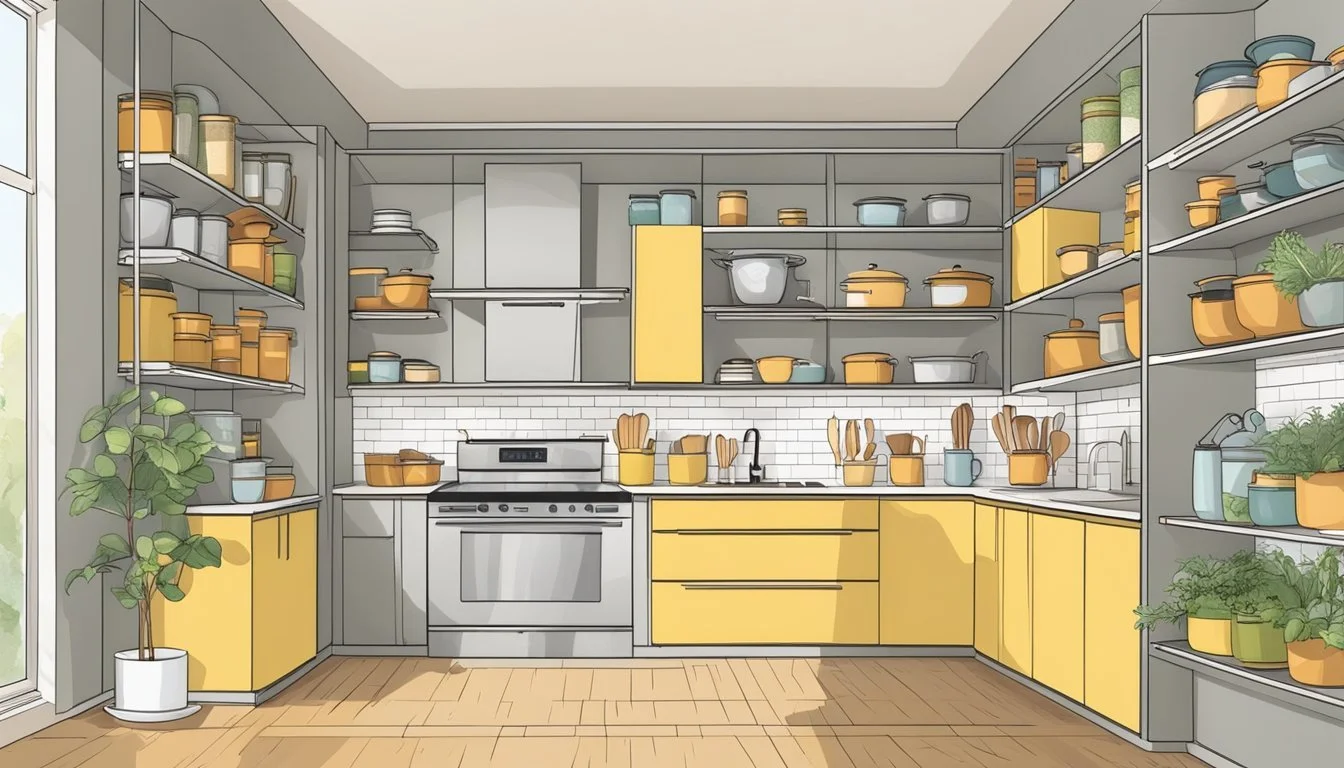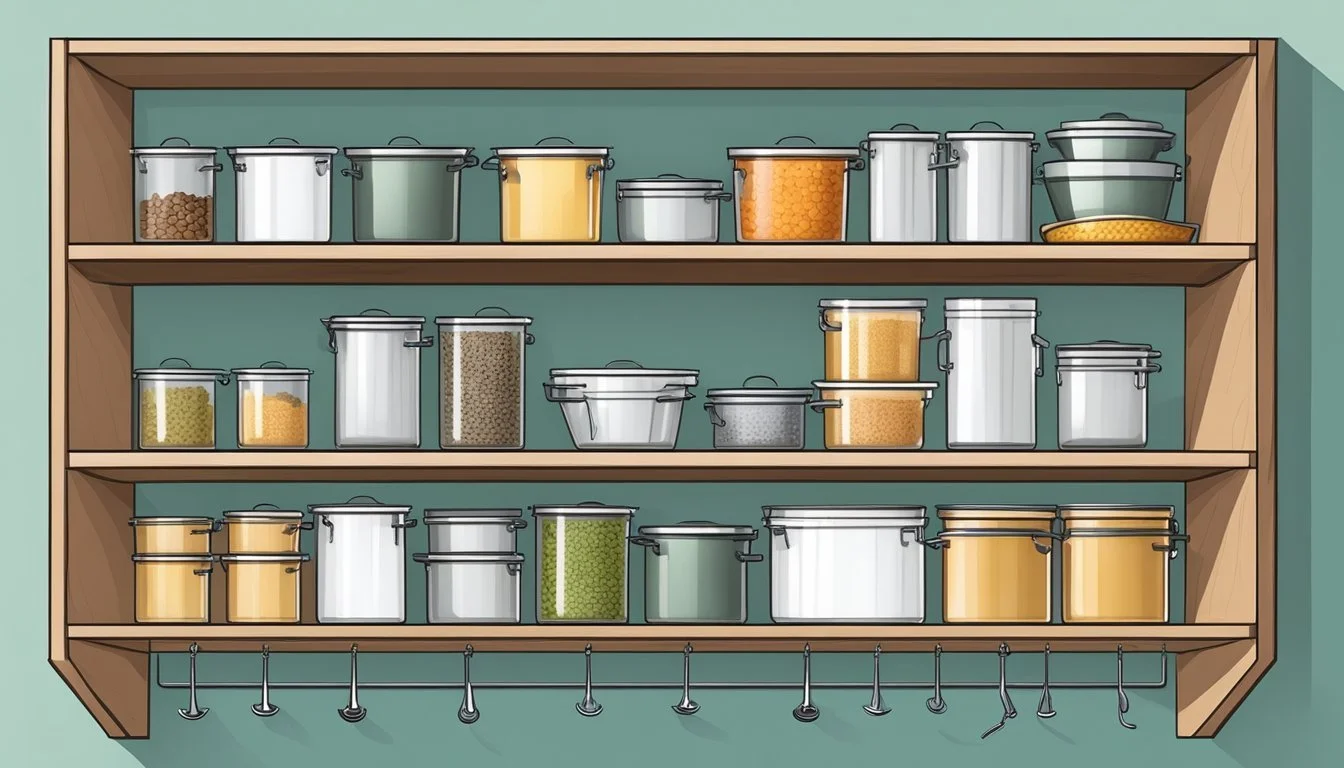10 Ways to Maximize Your Kitchen Cabinet Space
Smart Organizing Solutions
Maximizing kitchen cabinet space is a common challenge faced by many homeowners. Limited cabinet room can make a kitchen feel cluttered and disorganized, hindering the culinary experience. With the right strategies, however, it is possible to transform even the smallest cabinets into efficient storage spaces. By employing creative solutions tailored to individual kitchen layouts and storage needs, anyone can turn their kitchen into an organized haven, allowing for a smoother cooking and food preparation process.
Effective organization of kitchen cabinets doesn’t necessarily require extensive renovations or a hefty investment. Simple adjustments, like utilizing vertical space for stacking or introducing organizational tools can make a significant difference. Measurement is crucial—knowing the exact dimensions of cabinet interiors ensures that any additions, such as shelf risers or storage products, fit perfectly without wasting valuable space. Through thoughtful approaches to kitchen cabinet organization, not only is it achievable to maximize space, but to also make the kitchen more functional and accessible.
Assessing Your Needs
Before one begins reorganizing, it's imperative to make a thorough assessment of the current kitchen cabinet space and storage needs. This detailed evaluation forms the foundation for efficient kitchen cabinet space utilization.
Evaluating Cabinet Layout
One should start by inspecting the existing layout of their kitchen cabinets. This involves measuring the dimensions of each cabinet, noting the placement of built-in shelves and drawers, and considering any fixed elements like plumbing or appliances that could affect usable space. Identifying the areas within the cabinet space where vertical or horizontal space is underutilized will indicate what improvements can be made.
Determining Storage Needs
After the layout has been evaluated, reflection on what items are essential for storage is key. One must prioritize their kitchen items, distinguishing between frequently used essentials and less commonly used items. By compiling an inventory list, separated into categories such as cookware, food items, and appliances, individuals can identify the type and quantity of storage solutions needed. This precision ensures that the kitchen cabinet space is maximized for the individual's unique requirements.
Smart Organization Strategies
Maximizing kitchen cabinet space requires a strategic approach, focusing on utilizing every inch effectively. Here are three specific ways to enhance cabinet organization.
Utilizing Vertical Space
Vertical space in kitchen cabinets is often underutilized. To tackle this, one can implement tiered shelving or add extra shelves, thus stacking items and reducing clutter. An example of this would be under-shelf baskets, which hang below shelves to add extra layers of storage. Additionally, hooks can be installed on the insides of doors or under cabinets to hang utensils, mugs, or small pots, keeping them accessible and orderly.
Implementing Drawer Dividers
Drawers can become a catch-all for various kitchen tools, making it hard to find what's needed. Drawer dividers offer a simple solution to this chaos. The dividers create designated areas within drawers, preventing items from shifting and getting mixed up. Adjustability is key here, as one might opt for adjustable dividers to tailor the space for different-sized utensils or gadgets.
Using Adjustable Shelving
Traditional shelving often results in wasted space due to fixed heights that may not accommodate all items. Installing adjustable shelves solves this problem, allowing one to reconfigure the heights to suit the cabinet's contents. This flexibility ensures that one can always make room for taller items, optimize the organization, and avoid stacking dishes too high, which could lead to accidents or damage.
Maximizing Cabinet Efficiency
Efficient kitchen cabinets streamline cooking routines and declutter space. By incorporating clever storage solutions, one can significantly enhance cabinet functionality.
Adding Pull-Out Drawers
Pull-out drawers transform hard-to-reach spaces into accessible storage. They allow easy viewing of contents without the need to crouch or remove items in the front. It's advisable to measure cabinet dimensions carefully to ensure drawers fit seamlessly.
Installing Cabinet Door Racks
Utilizing the back of cabinet doors with storage racks can free up shelf space. These racks can hold a variety of items such as lids, cutting boards, or wrap dispensers. Installation is often straightforward, requiring only a few screws or adhesive pads.
Embracing Lazy Susans
Installing a lazy Susan in corner cabinets makes use of otherwise wasted space. They come in half-moon or full-circle designs, ideal for organizing condiments, spices, and small containers for quick retrieval with a simple spin.
Innovative Storage Solutions
Maximizing kitchen cabinet space is essential for an organized and efficient culinary environment. Innovative storage solutions can transform cluttered cabinets into well-arranged spaces, ensuring cookware and utensils are easily accessible.
Hanging Pots and Pans
One can significantly free up cabinet space by installing a pot rack either overhead or mounted on the wall. This not only makes pots and pans more accessible but also serves as a visual highlight in the kitchen.
Attaching Magnetic Strips
Magnetic strips can be a smart addition to any kitchen. They are typically attached to the wall or on the inside of cabinet doors, providing a space to securely hold metallic utensils, knives, or spice containers, thus clearing valuable shelf space.
Exploring Lid Organizers
Using a lid organizer helps in systematic storage of pot and pan lids, which often contribute to cabinet disarray. They can be installed on cabinet doors or used as freestanding dividers, making it easier to find the right lid for each pot or pan swiftly.
By incorporating these focused solutions, one can enhance the functionality and organization of kitchen cabinets.
Space-Saving Cookware Organization
Maximizing cabinet space requires smart strategies, particularly for bulky cookware. Utilizing shelf risers and specialized cookware organizers can transform cluttered cabinets into efficiently organized storage.
Stacking with Shelf Risers
Shelf risers boost cabinet utility by creating additional levels of storage. They work exceptionally well for:
Pots and pans: Place shelf risers in cabinets and stack pots on the bottom and lids on the riser, maintaining easy access.
Dinnerware: Sort plates and bowls by size on separate tiers; this not only saves space but also prevents chipping.
Example of Shelf Riser Usage:
Without Shelf Risers With Shelf Risers Pots stack on each other, taking more vertical space. Pots nest below, lids rest above, optimizing space. Bowls and plates are piled together, harder to reach. Bowls on one level, plates above, easier access.
Deploying Cookware Organizers
Cookware organizers come in various designs to accommodate specific items:
Lid organizers: They keep lids upright and separated, preventing scratches and ensuring they don't take up unnecessary space.
Pan organizers: Employ these to stack pans sideways, allowing for individual removal without the need to unstack.
Benefits of Cookware Organizers:
Prevent damage: Separators protect non-stick surfaces from scratches.
Increase accessibility: Each piece can be removed without moving others.
By adhering to these organizational methods, one can not only save space but also extend the longevity of their cookware.
Optimizing Kitchen Accessories
Optimizing kitchen accessories involves the use of clever storage solutions and organizational strategies to ensure every item has its place, from spices to spoons.
Sorting Spice Collection
A spice collection can be both visually appealing and functional with the use of spice racks that fit inside cabinets. They ideally come in tiered designs to keep the labels visible for easy identification. Alternatively, magnetic spice jars can adhere to the inside of cabinet doors or to a metal board on the wall, saving shelf space and creating an attractive display. For optimal organization:
Arrange spices in alphabetical order or by frequency of use.
Replenish spices periodically to maintain freshness and discard outdated ones.
Organizing Cutlery and Utensils
To prevent cutlery and utensils from becoming a jumbled mess, drawer dividers and utensil trays are essential. They should be sorted according to type and size for ease of retrieval. Additionally:
Install hooks on the cabinet walls or doors to hang frequently used utensils.
Utilize vertical space with stackable bins or containers for measuring cups and spoons.
By employing these specific strategies, one can maximize cabinet efficiency and reduce clutter in the kitchen.
Enhancing Kitchen Capacity
When aiming to enhance kitchen capacity, the key areas to focus on are the addition of kitchen islands and the exploitation of available wall space. These approaches address storage and efficiency directly, significantly impacting the overall utility of the kitchen.
Introducing Kitchen Islands
Introducing a kitchen island can transform the functionality of a kitchen, especially if there's a shortage of countertop space. For a small kitchen, an island provides extra surface area for meal preparation and can offer additional storage underneath. An island can be equipped with cabinets, drawers, or shelves, thus serving a dual purpose of preparation space and storage.
Exploiting Wall Space
Wall space in a kitchen often goes underutilized. To maximize storage, one can install open shelves or hang racks that capitalize on vertical space. These solutions allow for easy access to frequently used items and keep countertops free from clutter. For items that are attractive and used regularly, such as pots and mugs, hanging them doubles as a functional decor element. Additionally, utilizing the inside of cabinet doors with hooks or slim racks can further optimize storage options without encroaching on the room's openness.
Leveraging Hidden and Dead Spaces
Maximizing kitchen cabinet space often involves creative use of areas that typically go underutilized. This section focuses on transforming hidden and dead spaces into functional storage solutions.
Corner Cabinet Innovations
Corner cabinets, notorious for being hard to reach and underused, can be outfitted with customized Lazy Susans or pull-out shelving systems, allowing for full rotation or extension and easy access to items stored in the back. Another approach involves installing corner drawer inserts, which angle back into the cabinet to provide organized compartments for small items.
Under Sink Storage Techniques
The area under the sink is often overlooked due to the presence of pipes and plumbing. By incorporating adjustable shelving or a pull-out caddy, household cleaning supplies are kept organized. Mounting a tension rod horizontally allows for convenient hanging storage for spray bottles, further exploiting this underused space.
Above Cabinet Areas
The tops of cabinets offer a wealth of storage potential. Utilizing baskets or bins for seldom-used items can both conceal clutter and keep things within reach. For a more built-in solution, installing cabinetry right up to the ceiling can dramatically increase a kitchen’s storage capacity, turning dead space into a discreet storage enclave.
Remember to measure cabinet spaces, including the hard-to-reach areas, before investing in any storage solutions to ensure a perfect fit and to avoid the aggravation of returning improperly sized items.
Maintaining Order in Pantries
Maintaining an orderly pantry hinges on effective use of space and categorizing items for easy access and visibility. Implementing structured storage solutions can transform a cluttered pantry into a functional, efficient area.
Utilizing Food Containers
One of the most effective methods to streamline pantry organization is through the use of food containers. Uniform containers not only offer a cohesive look, but they also optimize space by fitting together more neatly than assorted packaging. Containers with airtight seals ensure prolonged freshness and protect against pests. Additionally, transparent or labeled containers allow for quick identification of contents, reducing the time spent searching for items.
Benefits of Using Food Containers:
Maintains freshness of pantry items.
Provides a neat, uniform appearance.
Facilitates easy identification with the use of labels.
Applying Tension Rods
Tension rods are a versatile tool for achieving organization within a pantry. By installing them vertically or horizontally, one can create custom shelving and compartments suitable for a variety of pantry items. The use of tension rods to segment space is particularly beneficial for maximizing storage and accessibility for bottles, jars, and small packages which might otherwise get lost in the depths of the pantry.
How to Use Tension Rods in a Pantry:
Create vertical dividers for baking sheets and cutting boards.
Install horizontally to hang spray bottles or to keep bagged items upright.
By focusing on these targeted strategies, anyone can maintain a well-ordered pantry space that simplifies cooking and inventory management.



